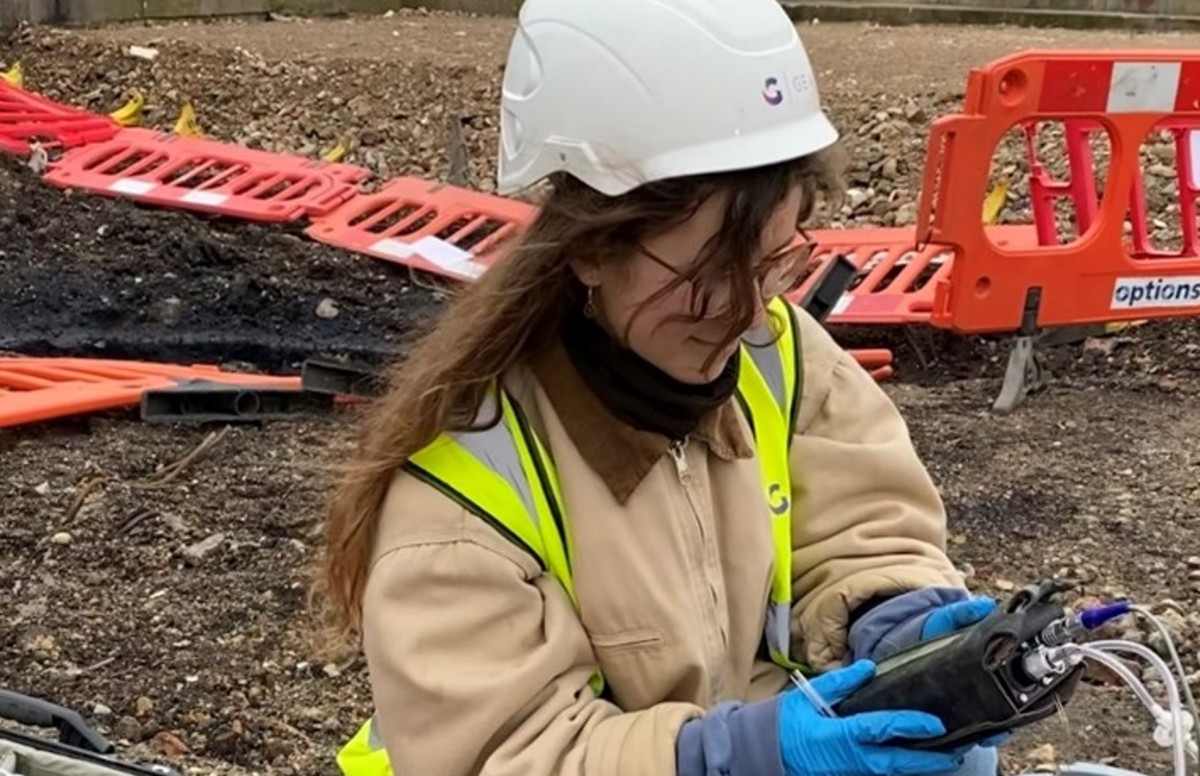The Facts About Geotheta Uncovered
The Facts About Geotheta Uncovered
Blog Article
Geotheta for Beginners
Table of ContentsNot known Details About Geotheta Some Ideas on Geotheta You Should KnowThe Buzz on GeothetaThe Single Strategy To Use For GeothetaThe Definitive Guide to Geotheta

They carry out site investigations, collect examples, perform research laboratory examinations, and evaluate data to review the suitability of the ground for building and construction tasks - Consulting Engineer. Based upon their findings, geotechnical engineers supply referrals for foundation style, incline stability, maintaining frameworks, and reduction of geotechnical risks. They work together with various other professionals, such as architects, structural designers, and construction teams, to make sure that geotechnical factors to consider are incorporated into the general job style and execution
By analyzing the actions and residential or commercial properties of dirt and rock, they can determine prospective geotechnical risks such as landslides, soil settlement, or slope instability. Their experience aids avoid failures or mishaps that might jeopardize lives and property. Here are some comprehensive responsibilities and obligations of a geotechnical engineer: Site Examination: Geotechnical designers conduct site examinations to collect data on subsurface conditions.
They translate the information to recognize the properties and habits of the dirt and rock, including their stamina, leaks in the structure, compaction qualities, and groundwater conditions. Geotechnical Analysis and Layout: Geotechnical designers assess the information collected during website examinations to analyze the security and viability of the website for construction projects. They perform geotechnical estimations and modeling to examine variables such as bearing capability, negotiation, incline stability, side planet stress, and groundwater flow.
Geotheta Can Be Fun For Everyone
Structure Layout: Geotechnical designers play a vital function in creating structures that can safely sustain the designated framework. They examine the soil problems and lots needs to establish the proper foundation kind, such as superficial foundations (e.g., grounds), deep structures (e.g (https://pxhere.com/en/photographer/4325446)., stacks), or specialized strategies like dirt renovation. They consider factors such as negotiation limitations, bearing ability, and soil-structure interaction to develop optimal foundation designs
They assess building strategies, monitor site tasks, and perform field evaluations to verify that the design suggestions are followed. If unpredicted geotechnical issues emerge, they examine the circumstance and give referrals for removal or modifications to the style. Risk Assessment and Mitigation: Geotechnical engineers examine geotechnical Related Site hazards and risks linked with the task site, such as landslides, liquefaction, or dirt erosion.

Cooperation and Interaction: Geotechnical engineers function carefully with various other professionals associated with a project, such as designers, architectural engineers, and construction groups. Efficient interaction and cooperation are vital to incorporate geotechnical considerations right into the general project layout and building procedure. Geotechnical designers give technical know-how, response queries, and guarantee that geotechnical needs are fulfilled.
The 45-Second Trick For Geotheta
Below are some types of geotechnical designers: Structure Designer: Foundation designers specialize in developing and analyzing foundations for structures. They assess the soil problems, lots needs, and website characteristics to determine the most appropriate structure type and design, such as superficial foundations, deep foundations, or specialized strategies like heap structures.
They assess the factors affecting incline security, such as soil residential or commercial properties, groundwater problems, and slope geometry, and develop approaches to stop slope failings and alleviate threats. Quake Engineer: Earthquake engineers specialize in evaluating and designing structures to stand up to seismic pressures. They assess the seismic hazard of a site, examine soil liquefaction capacity, and develop seismic design requirements to ensure the safety and security and strength of frameworks throughout quakes.
They do area testing, accumulate examples, and examine the gathered data to identify the dirt residential properties, geologic developments, and groundwater conditions at a site. Geotechnical Instrumentation Engineer: Geotechnical instrumentation designers concentrate on tracking and determining the actions of dirt, rock, and frameworks. They mount and maintain instrumentation systems that check variables such as soil negotiation, groundwater degrees, incline movements, and structural displacements to assess performance and give very early warnings of prospective issues.
Geotheta for Beginners
They carry out examinations such as triaxial tests, combination tests, straight shear examinations, and permeability tests to gather information for geotechnical analysis and layout. Geosynthetics Designer: Geosynthetics engineers focus on the style and application of geosynthetic products, such as geotextiles, geogrids, and geomembranes. They utilize these materials to boost dirt security, strengthen slopes, offer water drainage solutions, and control erosion.
They often tend to be investigatory people, which implies they're intellectual, reflective, and investigative. They are curious, methodical, sensible, logical, and sensible. Some of them are additionally social, meaning they're kind, generous, participating, client, caring, useful, empathetic, tactful, and friendly - Consulting Engineers.
In the office environment, geotechnical designers make use of specialized software application devices to execute computations, create designs, and examine information. They prepare records, evaluation job specs, connect with clients and staff member, and coordinate project activities. The workplace setup gives a helpful atmosphere for research, evaluation, and partnership with various other professionals associated with the job.
Some Of Geotheta
They regularly visit task websites to carry out site investigations, evaluate geotechnical problems, and gather data for analysis. These check outs entail taking a trip to different places, sometimes in remote or difficult surfaces. Geotechnical engineers might do soil tasting, conduct tests, and screen construction activities to ensure that the geotechnical aspects of the project are being applied appropriately.
Geotechnical designers additionally function in specialized geotechnical laboratories. Geotechnical laboratory engineers function thoroughly in these atmospheres, dealing with testing equipment, running instruments, and taping information.
Report this page